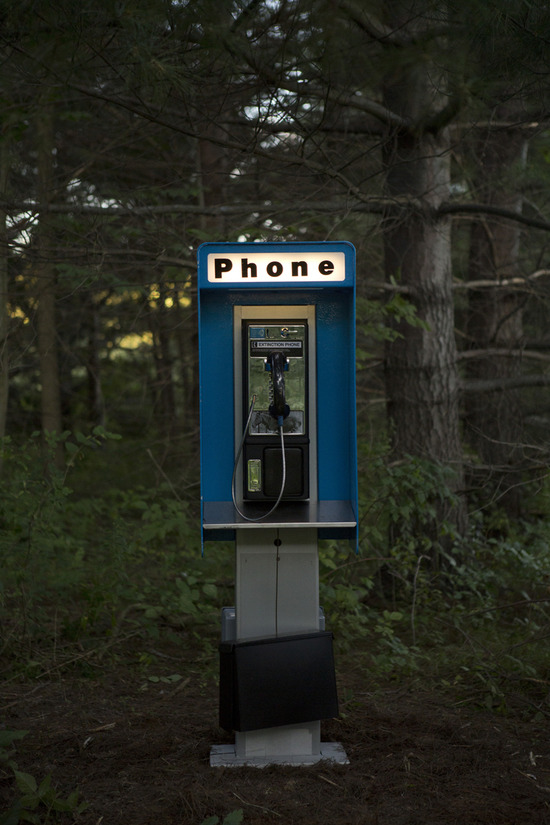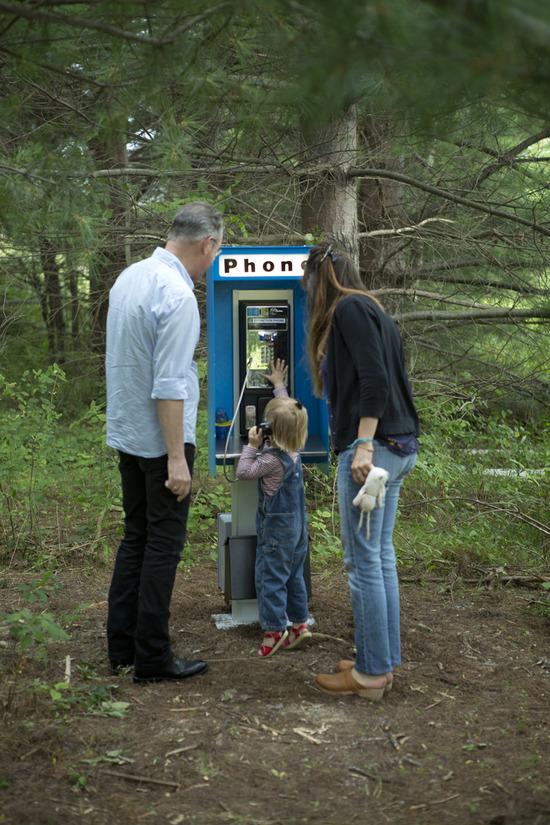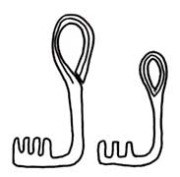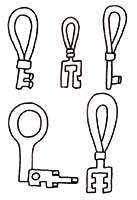The Voder was the worlds first voice electronic synthesizer. In 1939 Homer Dudley working at Bell Telephone Laboratories in Murray Hill, New Jersey began to publicly demonstrate the Voder, the first electronic device that could generate continuous human speech electronically.
Philology
33 types of moth
Angle shades
Autumnal rustic
Blood-vein
Blotched emerald
The brick
The clay
Clouded-bordered brindle
Cocaine tussock moth
Common footman
Common marbled carpet
Common wave
Coxcomb prominent
Dark dagger
Dusky brocade
The engrailed
Feathered thorn
Figure of eighty
The flame
Flame shoulder
The Gothic
Green oak tortrix
Lunar underwing
May highflyer
Minsmere crimson underwing
Pine processionary
Poplar kitten
The satellite
Setaceous Hebrew character
The shark
The snout
Snowberry clearwing
Svensson's copper underwing
True lover's knot
✆ EXTINCTION PHONE
Nicholas Monsour
Extinction Phone, 2014
Aluminum, thermoplastic, PVC, plywood, paper, refurbished pay phone, crystal oscillator timer circuit, Arduino control circuit, audio circuit, lead-acid batteries, recordings of extinct species, phone book containing scientific names of extinct species.
The extinction phone rings every time a unique species goes extinct on Earth, which is 73,000 times per year, or 200 times per day, or every 7.2 minutes.
This project is a site-specific, interactive art installation. The phone is controlled by an Arduino microcontroller, and uses an AdaFruit Waveshield to playback audio. The phone also includes custom built timer and interaction circuitry. The recordings of extinct animals were gathered from various libraries and collections around the world.

The directory that hangs from the pay phone contains the most up to date and comprehensive list of identified species believed to be extinct. The phone book can be purchased here.
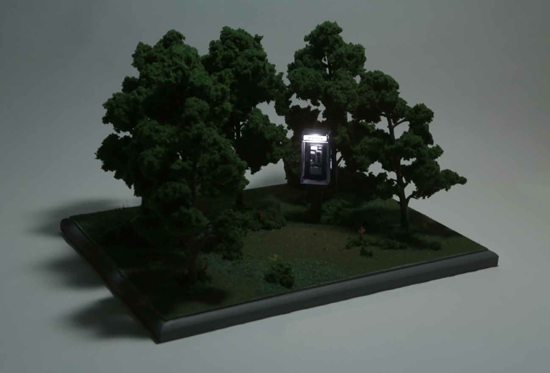
ANTIQUE MICROSCOPE SLIDES, PART 2
Taken from www.victorianmicroscopeslides.com

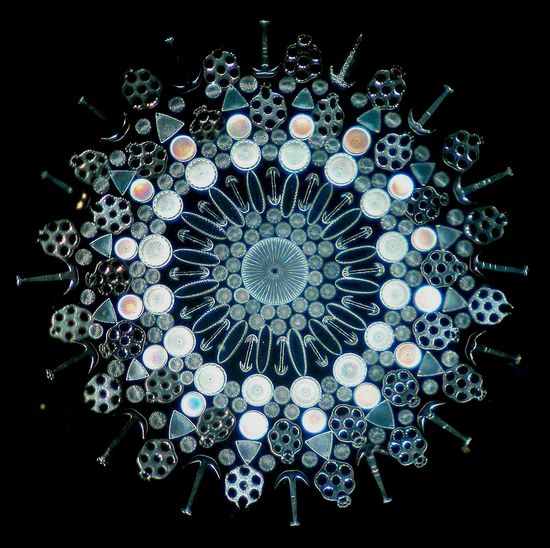 Arranged Exhibition Slide comprised of Diatoms, Sponge Spicules, and Plates and Anchors of Synapta; Imaged using Darkfield lighting technique.
Arranged Exhibition Slide comprised of Diatoms, Sponge Spicules, and Plates and Anchors of Synapta; Imaged using Darkfield lighting technique.
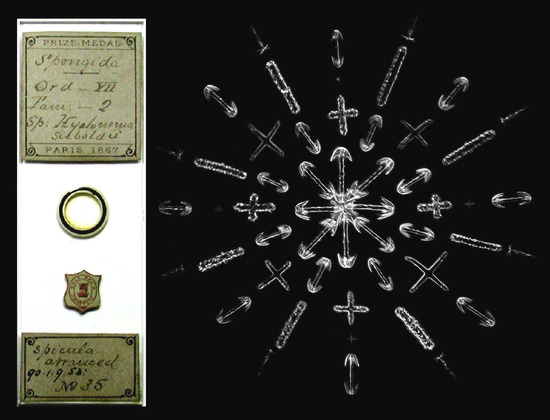 Arranged mount of Sponge Spicula by A.C. Cole, imaged using Darkfield lighting.
Arranged mount of Sponge Spicula by A.C. Cole, imaged using Darkfield lighting.
 Arranged slide, Watson & Sons "Eggs of Butterflies, Etc." shown in detail.
Arranged slide, Watson & Sons "Eggs of Butterflies, Etc." shown in detail.
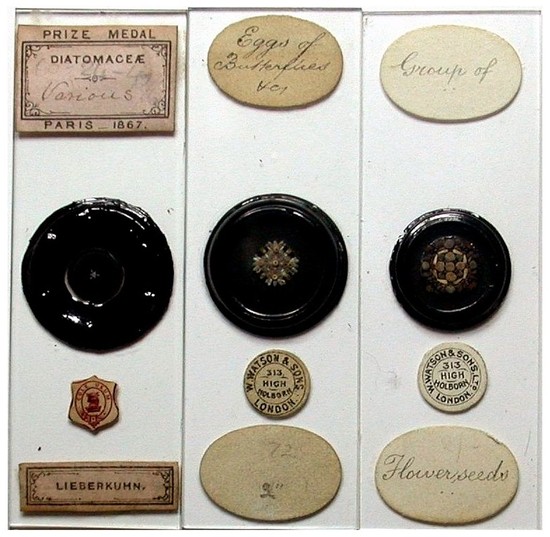 Three arranged slides on opaque backgrounds for incident lighting
Three arranged slides on opaque backgrounds for incident lighting
Antique microscope slides
Found on Ebay.


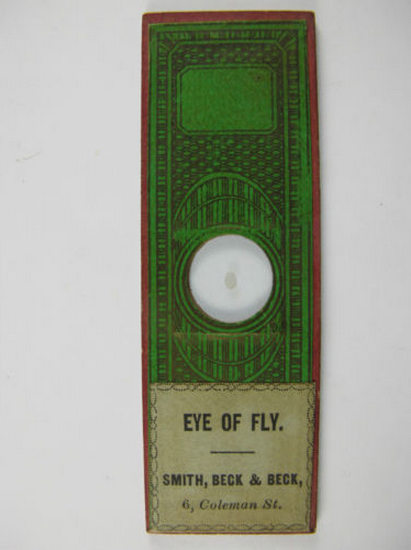

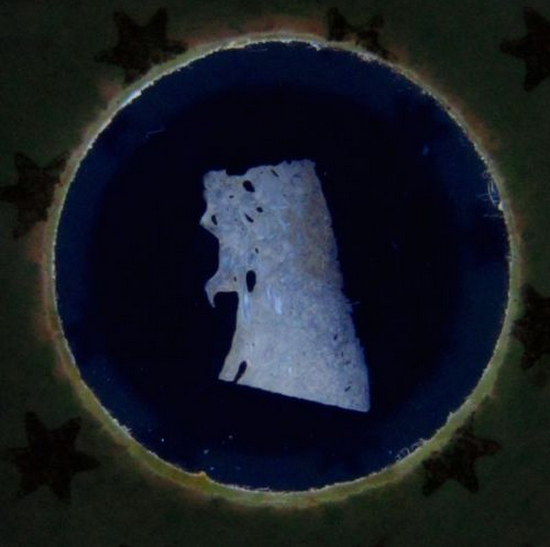
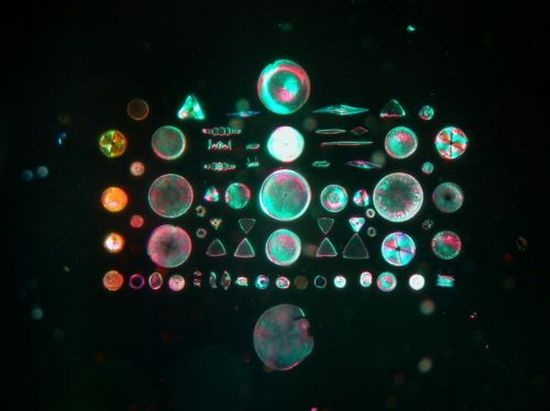
The Voynich Manuscript
The Voynich manuscript is an illustrated codex hand-written in an unknown writing system. The book has been carbon-dated to the early 15th century (1404–1438), and may have been composed in Northern Italy during the Italian Renaissance. The manuscript is named after Wilfrid Voynich, a book dealer who purchased it in 1912.
The pages of the codex are vellum. Some of the pages are missing, but about 240 remain. The text is written from left to right, and most of the pages have illustrations or diagrams. Many people have speculated that the writing might be nonsense. However, in 2013, Marcelo Montemurro of the University of Manchester and Damian Zanette of the Bariloche Atomic Centre published a paper documenting their identification of a semantic pattern in the writing; this suggests that the Voynich manuscript is a ciphertext with a message.
The Voynich manuscript has been studied by many professional and amateur cryptographers, including American and British codebreakers from both World War I and World War II. No one has yet succeeded in deciphering the text, and it has become a famous case in the history of cryptography. The mystery of the meaning and origin of the manuscript has excited the popular imagination, making the manuscript the subject of novels and speculation. None of the many hypotheses proposed over the last hundred years has yet been independently verified.
The Voynich manuscript was donated by Hans P. Kraus to Yale University's Beinecke Rare Book and Manuscript Library in 1969, where it is catalogued under call number MS 408. A digitized high-resolution copy is also accessible freely at their website. (Wikipedia)
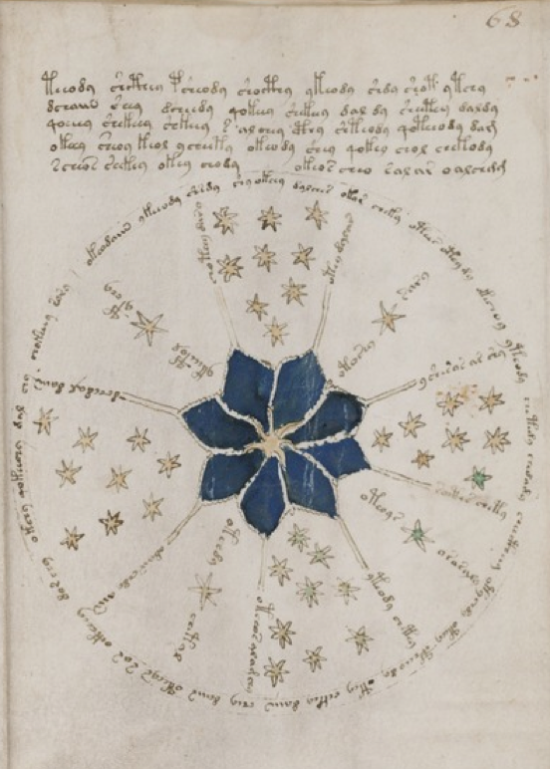
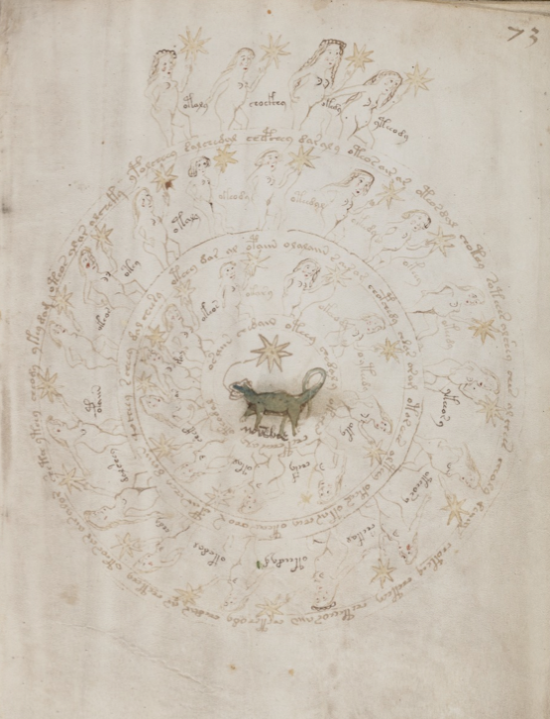
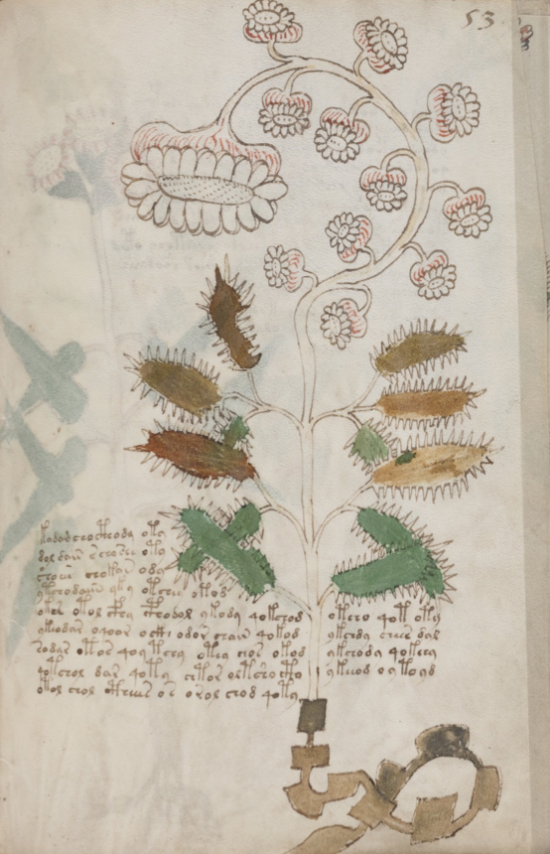
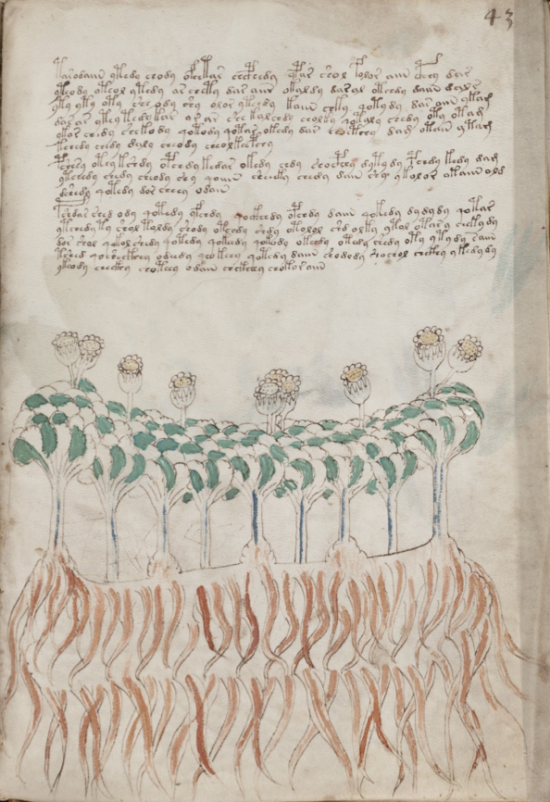
Dark Current






I am delving into dark currents, the scientific poetry of video. This is what mimesis seeks to screen out: the medium. Or more specifically, the primacy of the pheno-text. I would even call it the accountability of the image. The video image is imagined as immaterial, and yet the material itself is expressive — literally. As Roland Barthes put it, "The 'grain' is the body in the voice as it sings, the hand as it writes, the limb as it performs." (IMAGE/MUSIC/TEXT, p.188)
In physics and in electronic engineering, dark current is the relatively small electric current that flows through photosensitive devices such as a photomultiplier tube, photodiode, or charge-coupled device even when no photons are entering the device. It is referred to as reverse bias leakage current in non-optical devices and is present in all diodes. Physically, dark current is due to the random generation of electrons and holes within the depletion region of the device that are then swept by the high electric field.
The charge generation rate is related to specific crystallographic defects within the depletion region. Dark-current spectroscopy can be used to determine the defects present by monitoring the peaks in the dark current histogram's evolution with temperature.
Dark current is one of the main sources for noise in image sensors such as charge-coupled devices. The pattern of different dark currents can result in a fixed-pattern noise; dark frame subtraction can remove an estimate of the mean fixed pattern, but there still remains a temporal noise, because the dark current itself has a shot noise. (WIKIPEDIA)

Automaton Aviary
BHUTANESE PHONOGRAPHIC STAMPS

Bhutan issued these phonographic stamps in 1973. The first of their kind, the records contained recordings of folk songs, facts about the country and the Bhutanese national anthem. They have adhesive backs for use as postage. In 2008, Bhutan issued a CD-ROM stamp as an update to this design.
RECORD 1:
RECORD 2:

The History of Keys
 |
|
 |
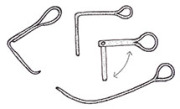 |
|
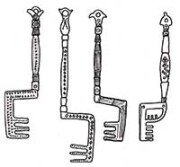 |
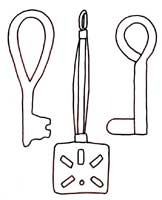 |
|
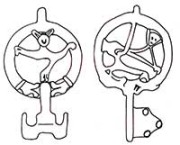 |
 |
 |
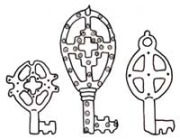 |
Drawings by Raine Borg, from his website Historical Locks.
IAMPETH
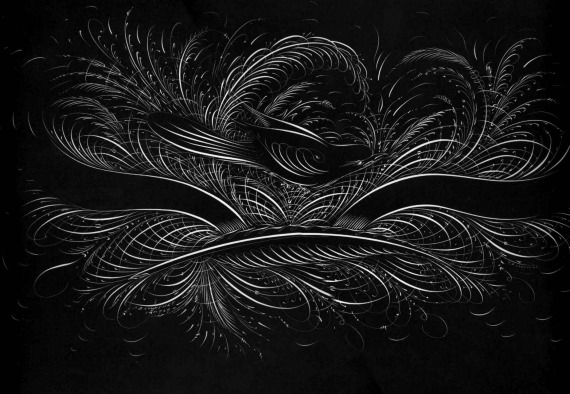

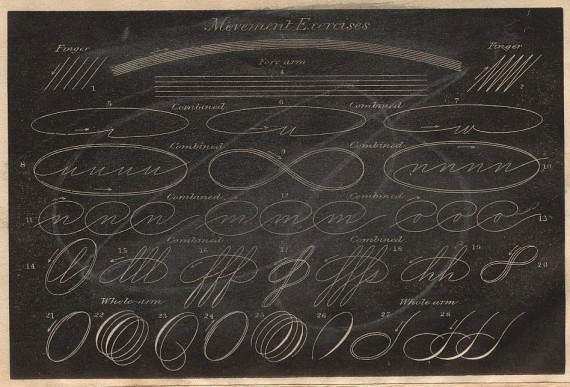
IAMPETH (the International Association of Master Penmen, Engrossers and Teachers of Handwriting), which describes itself as "an international, non-profit association dedicated to practicing and preserving the beautiful arts of calligraphy, engrossing and fine penmanship," has an absolutely wonderful, treasure-trove of a website at www.iampeth.com.
Highlights of the IAMPETH's website include the gallery of Master Penmen from the Golden Age of Ornamental Penmanship (replete with biographies and work samples), but by far the greatest thing this site has to offer is a PDF library of dozens of scanned, downloadable rare books filled with beautiful calligraphic designs.
Nietzsche's Typewriter

THE WRITING BALL IS A THING LIKE ME: MADE OF IRON
YET EASILY TWISTED ON JOURNEYS.
PATIENCE AND TACT ARE REQUIRED IN ABUNDANCE
AS WELL AS FINE FINGERS TO USE US."
— Friedrich Nietzsche, on February 16th 1882
